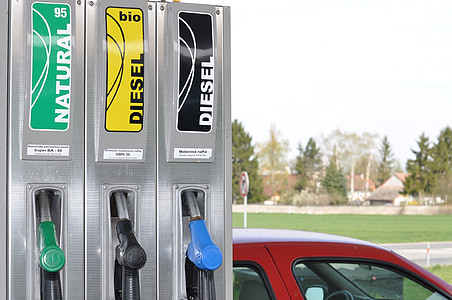The current rally in global crude oil prices has emerged as a significant headwind for the worldwide economy, directly contributing to an alarming surge in inflation. As a fundamental and pervasive input across virtually all sectors of commerce and industry, the cost of oil acts as a primary transmission mechanism, quickly translating energy market volatility into widespread price increases for consumers. This phenomenon creates a challenging landscape for central banks and policymakers, who must navigate the fine line between curbing inflation and risking an economic downturn—a classic stagflationary dilemma. Understanding the multifactorial nature of the oil price spike and its complex ripple effects is essential for anticipating the future trajectory of the global financial environment.
I. The Direct and Indirect Channels of Oil-Driven Inflation
Inflation is typically defined as a sustained increase in the general price level of goods and services in an economy over a period of time, resulting in a fall in the purchasing value of money. When oil prices rise, they contribute to inflation through two distinct, yet interconnected, channels: the direct “first-round” effect and the indirect “second-round” effect.
A. The First-Round (Direct) Effect
The direct impact is immediately noticeable and quantifiable, primarily through the energy component of the Consumer Price Index (CPI).
A. Fuel Costs for Consumers: The most visible effect is the surge in prices at the pump for gasoline, diesel, and kerosene. These higher fuel costs instantly reduce the discretionary spending power of households.
B. Residential and Commercial Heating: In many economies, crude oil derivatives like heating oil are used for residential and commercial heating. Price spikes directly increase utility bills for homes and businesses, contributing to an immediate rise in the cost of living and operations.
C. Energy as a Consumer Good: The overall “energy” segment of an inflation index, encompassing vehicle fuels and domestic utilities, reflects this immediate pass-through, serving as the first indicator of oil-induced price pressure.
B. The Second-Round (Indirect) Effects: Cost-Push Inflation
The indirect effects are more subtle but ultimately more pervasive and damaging, manifesting as cost-push inflation across non-energy sectors. Oil is not just a fuel; it is a critical cost component in the production and transport of nearly every good and service.
A. Transportation and Logistics: Every product sold, from fresh produce to electronics, must be transported. Higher diesel and jet fuel prices immediately increase the operating costs for trucking companies, shipping lines, and airlines. These companies invariably pass on these elevated logistics costs to retailers and, ultimately, to the consumer through higher final prices.
B. Manufacturing Input Costs: Crude oil is a key feedstock for petrochemicals, which are used to produce a vast array of materials, including plastics, fertilizers, synthetic fabrics, and asphalt. An oil price rally makes these raw material inputs significantly more expensive, forcing manufacturers to raise the wholesale prices of their finished goods. This ripple effect is often first captured in the Producer Price Index (PPI).
C. Inflation Expectations and Wage-Price Spiral: Perhaps the most challenging second-round effect is the impact on inflation expectations. When businesses and consumers expect prices to continue rising, workers demand higher wages to maintain their purchasing power, and businesses raise prices proactively to cover anticipated future cost increases. This circular dynamic, known as the wage-price spiral, can entrench inflation and make it far more difficult for central banks to control.
II. Deconstructing the Oil Price Rally: Supply, Demand, and Geopolitics
The current upward trajectory in crude oil prices is not the result of a single factor but a complex interplay of geopolitical tensions, supply management decisions, and shifting global demand dynamics.
A. Supply-Side Constraints and Decisions
A. OPEC+ Production Management: The Organization of the Petroleum Exporting Countries (OPEC) and its allies (OPEC+), including major players like Saudi Arabia and Russia, exert considerable influence. Their coordinated decisions to implement or extend production cuts are designed to balance the market and support higher prices, directly limiting the available global supply.
B. Geopolitical Instability and Sanctions: Conflicts and political instability in major oil-producing regions, such as the Middle East or Eastern Europe, introduce a risk premium into the oil price. The mere threat of supply disruption, whether from direct conflict or international sanctions, can immediately drive futures prices higher as traders price in potential shortages.
C. Underinvestment in Exploration and Production: A longer-term factor is the persistent underinvestment in new oil exploration and production (E&P) capacity by major energy companies. Driven by climate goals and the volatility of past decades, this underinvestment means that global supply struggles to respond quickly to sudden spikes in demand, creating an inelastic supply curve.
B. Robust Global Demand and Economic Factors
A. Post-Pandemic Economic Rebound: The rapid global economic recovery following the pandemic initially fueled a massive, synchronized surge in demand for energy, straining supply chains and drawing down global inventories.
B. Emerging Market Growth: Steady economic expansion, particularly in large developing nations like China and India, continues to generate a massive, increasing appetite for crude oil to power their industrial and transportation sectors.
C. Inventory Levels and Market Sentiment: Low commercial and strategic petroleum reserves can amplify market anxiety. When inventories are low, any small disruption is perceived as a greater risk, driving speculative trading activity and increasing short-term volatility in oil derivatives markets.

III. The Policymaker’s Dilemma: Stagflationary Trade-Offs
For central banks operating under a flexible inflation targeting mandate, oil-driven inflation presents an acute challenge because it often carries a stagflationary risk—simultaneously causing high inflation and slow economic growth.
A. Monetary Policy Responses and the Supply Shock
The conventional tool for fighting inflation is monetary tightening, primarily through raising interest rates. However, the effectiveness and appropriateness of this response depend critically on the nature of the price shock.
A. Responding to Demand-Driven Inflation: If high oil prices were primarily a result of excessive aggregate demand in the economy (a demand shock), raising interest rates would be effective. Higher rates cool demand, reducing the pressure on prices and restoring equilibrium.
B. The Challenge of Supply-Driven Inflation: When oil prices spike due to a supply shock (like OPEC+ cuts or geopolitical events), higher interest rates only combat the secondary demand effects. The core problem—the reduced availability of a critical input—remains. Raising rates to combat a supply shock reduces economic output and employment without immediately solving the supply constraint, potentially leading to an undesirable economic slowdown or recession while inflation remains stubbornly high. This forces central banks into a difficult trade-off between price stability and economic growth.
C. Anchoring Inflation Expectations: Despite the economic risks, central banks must act decisively to prevent the second-round effects and keep inflation expectations anchored. Failure to respond can lead to the damaging wage-price spiral, making credible policy communication paramount.
B. Fiscal Policy Options and Limitations
Governments can deploy fiscal tools, but these often involve short-term political trade-offs and can have unintended consequences.
A. Fuel Tax Cuts and Subsidies: Governments can temporarily reduce or suspend fuel excise taxes or offer consumer subsidies to cushion the immediate impact on households. While popular, these measures are expensive, draw on public funds, and do not solve the underlying price issue. Crucially, they can also paradoxically increase demand, potentially counteracting the central bank’s anti-inflationary efforts.
B. Strategic Reserve Releases: Releasing oil from Strategic Petroleum Reserves (SPRs) can provide a temporary flood of supply to the market, helping to stabilize prices during acute shortages. This is generally a short-term emergency measure and is not a sustainable solution for persistent price rallies.
C. Investment in Energy Efficiency: In the long term, fiscal policy focused on infrastructure investment and incentives for energy efficiency, renewable energy, and less oil-intensive transport can structurally reduce the economy’s reliance on crude oil, ultimately lessening the transmission of oil price shocks to domestic inflation.
IV. The Decoupling Thesis and Future Outlook
While the historical link between oil prices and inflation was dominant in the 1970s and 1980s, some economists argue that the correlation has lessened in advanced economies due to structural changes.
A. Structural Changes Moderating the Link
A. Energy Efficiency Gains: Modern economies use less energy per unit of GDP than they did decades ago. Advances in technology, fuel-efficient engines, and improved building insulation mean a rise in oil prices has a comparatively smaller impact on overall production costs.
B. Shift to Service-Based Economies: The growth of the service sector—which is inherently less oil-intensive than heavy manufacturing—has reduced the economy’s overall dependence on crude oil as a primary input.
C. Enhanced Monetary Credibility: Since the 1990s, central banks have demonstrated greater commitment and effectiveness in controlling inflation, which has successfully kept long-term inflation expectations more anchored, making the wage-price spiral less likely to ignite from transient supply shocks.
B. The Current Reality and Outlook
Despite the decoupling thesis, the current environment shows that a multi-factor oil rally combined with already high inflation expectations and tight labor markets still presents a serious inflationary risk.
A. Persistence of Core Inflation: The key metric for central bankers is “core inflation,” which strips out volatile energy and food prices. If core inflation remains high, it confirms that the indirect, second-round effects of oil (via transport and materials) have fully passed through the economy and become entrenched, requiring sustained policy action.
B. Market Forecasts: Many long-term forecasts anticipate that, barring significant geopolitical escalation, growing global oil supply (especially from non-OPEC producers) and softening demand will eventually lead to a gradual decrease in oil prices over the next couple of years. However, this downward trend remains susceptible to sudden, sharp reversals based on the unpredictable actions of OPEC+ or new global conflicts.
C. The Energy Transition: In the medium to long term, the global transition toward renewable energy sources and electric vehicles (EVs) will structurally dampen the demand for oil, eventually reducing its inflationary potential. However, the transition itself requires massive investment and carries its own commodity price risks for materials like lithium and copper, suggesting that energy-related price volatility will remain a persistent, albeit shifting, feature of the global economy for the foreseeable future.
The oil rally is a potent reminder of crude oil’s enduring power as a systemic risk to global price stability. While the long-term trend favors a decline in oil dependency, policymakers must address the current inflationary surge with a nuanced approach that acknowledges the supply-driven nature of the shock while guarding against the dangerous entrenchment of inflation expectations.







